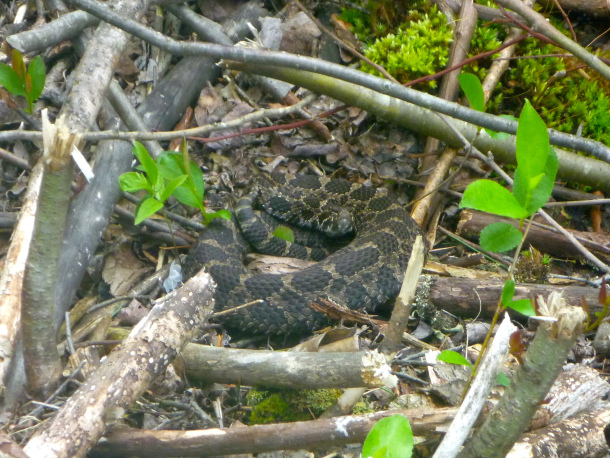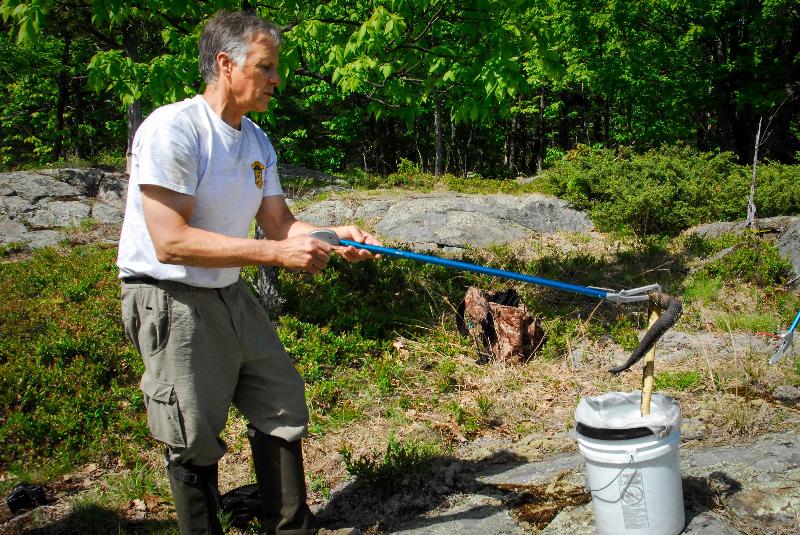From the US Fish and Wildlife Service’s Conserving the Nature of the Northeast blog:
 Three years of research, more than $60,000 in funding, and continual habitat manipulation is the secret to resurrecting a degraded swamp in New York into basking habitat for one of the state’s slithering residents.
Three years of research, more than $60,000 in funding, and continual habitat manipulation is the secret to resurrecting a degraded swamp in New York into basking habitat for one of the state’s slithering residents.
The eastern massasauga rattlesnake (Sistrurus catenatus) is listed as endangered by the state of New York and is a candidate for federal protection under the Endangered Species Act. In the meantime, the U.S. Fish and Wildlife Service continues working to recover the species.
The massasauga lives in wet areas made of peat layers from years of decomposing plants. The layers hold water like a sponge, with new plants growing on each layer. Just two swamps in the Empire State support the species, but one has been so severely degraded that few massasaugas can actually survive there.
Photo: Eastern massasauga, courtesy USFWS

 Nashville Public Radio
Nashville Public Radio